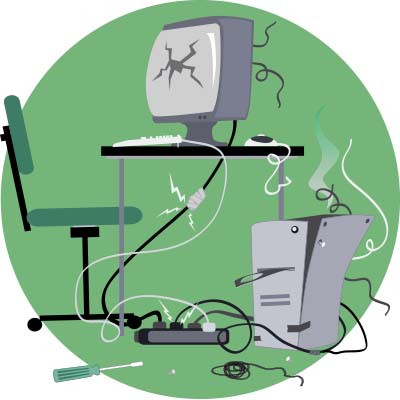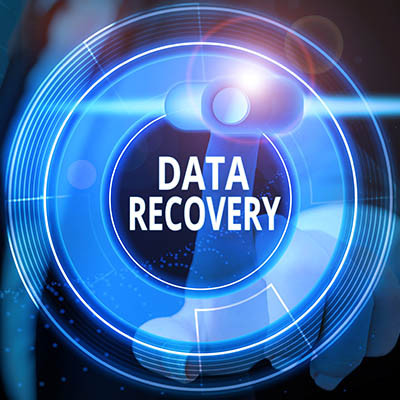Running a business is like managing a bunch of moving parts with relationships with employees, customers, operations, and, of course, vendors. Vendors supply your business with the products and services that keep things running, but if you’re not careful, those relationships can turn into time and money pits. So, how do you make vendor relationships work in your favor? Here are some smart ways to get the most out of them without unnecessary headaches.

- Home
- About Us
- IT Services
- Understanding IT
- Understanding Shadow IT
- Understanding Your Virtual Identity
- Understanding the Modern Office
- IT Threat Glossary
- Understanding Business Continuity
- Windows Server 2003: End of Life
- Understanding the Internet of Things
- Understanding Network Security
- Understanding SOX
- Understanding BYOD
- Understanding PCI DSS
- Windows XP End of Life
- Understanding HIPAA
- Cloud Computing
- News & Events
- Blog
- Support
- Contact Us
- Register
- Login
Texas Professional IT Services LLC Blog
By now, you’ve heard us discuss how data backup is extremely important for every organization. We try to spread awareness of the negative impacts to a business that doesn’t have a comprehensive backup plan in place. Fortunately, data backup has come a long way in the past decade, making it easier, faster, and way more reliable. Let’s take a look at how things have changed in data backup.
There is no shortage of events that can throw a business off track, from severe storms to human error to cybercriminal activity. Fortunately, a little preparation can make them much easier to navigate.
Let’s discuss creating a crisis plan to address these kinds of events.
Business continuity is a critical element of any organization’s preparations for the future, including how comprehensive the backup is designed to be. Let’s discuss the steps that businesses—especially small ones—need to take to ensure their data is protected.
How much does your business depend on its mobile technology? More likely than not, you have smartphones implemented on your network in some capacity, whether it’s for productivity or security. That said, you need to have a strategy in place to manage and maintain them, which is where mobile device management comes in.
You know what they say: “Don’t make a promise that you can’t keep.” Making promises to your clients and customers can be a sticky business, and we all know that IT can be a bit unpredictable, making promises difficult to manage. Still, we’re confident that we can promise the following three guarantees for your business.
Supercharging your productivity is all about making small, deliberate changes that create lasting impacts. Unfortunately, there is no roadmap to follow, so you will have to figure it out for yourself. In today’s blog, we talk about prioritization, time management, and focus and how they each work to help you get more done.
Now that the holidays have passed and are winding down, you may need to phase out some of your old technology to make room for the new. Maybe you’re looking to the new year as an opportunity to upgrade some of the tech your business uses. In either case, it is essential to dispose of your old tools responsibly and sustainably.
For your business to achieve true business continuity—meaning you can maintain your operations regardless of disasters or issues—a data backup is a critical element of your preparations.
As such, it is critical that your backup is designed to be as comprehensive and reliable as possible.
Downtime is a silent but powerful business disruptor. The moment operations grind to a halt, teams scramble to identify and resolve the issue. But imagine if you could avoid that chaos altogether. That’s our goal for today’s blog—to help you take steps to prevent downtime before it starts.
Network bottlenecks can be a real problem for businesses that depend on significant data transmission as a part of their day-to-day operations. More companies than ever use a lot of different technologies that chew through bandwidth and it can cause their network to move slowly. Let’s go through some of the steps you should take to eliminate these network bottlenecks.
Modern businesses lean heavily on collaboration, and without efficient and reliable file sharing, that strategy goes out the window. It’s important that you know how to build and maintain solid file sharing practices and get the technology you need to make that possible. In today’s blog, we will give you four tips on how to build an efficient and secure file-sharing platform that can take your business a long way.
Small businesses often face a range of technology-related challenges that can disrupt the efficiency of their business. Being able to understand the common issues—such as network connectivity problems, outdated technology, or cybersecurity—is the first step toward keeping business running smoothly. By identifying these recurring problems, businesses can anticipate potential disruptions and prepare strategies to reduce their risk.
By now, you know that every business needs to prioritize its entire security footprint, including technology. The security technology used in businesses today has a huge effect on the overall security of an organization. This means that you have to have a coordinated effort that allows your security initiatives to consider your business’ IT. In today’s blog, we’ll show you how effective organizations consolidate their security using IT.
Without technology, your business cannot run the way it needs to. If a disaster strikes, there is no telling how much it could affect operations. For example, a hurricane or a cyberattack could disrupt operations to the point where your business cannot function the way it needs to. Today, we want to highlight some of the ways that a disaster recovery system can help you overcome these hurdles.
Data backup is a crucial part of any business operation, but many employees within an organization might not necessarily know or understand how data backup actually works, or even what gets backed up during the process. Today, we want to demystify how data backup typically works and why it’s important to know what gets backed up, and when.
Summer is a time for fun and relaxation, not tech-related stress. To ensure your devices are safe from cybersecurity threats and weather-related issues, we’ve compiled some essential tips.
You’ve likely seen many blogs on our feed about data backup and disaster recovery, and that is because it’s an incredibly important solution for businesses of all kinds. Today, we want to look at the 3-2-1 rule and how it can help your business preserve its important assets in the event of a disaster.
Nowadays, businesses are taking cybersecurity much more seriously. Many insurers require businesses to adhere to specific cybersecurity standards before offering coverage. A key requirement is the implementation of multi-factor authentication (MFA).
Losing your phone can be a distressing experience. Not only does it leave you disconnected from the digital world for the time being, but it also poses significant security risks for you and your organization if you use it for work. Taking a few steps can help you reduce the damage and even help you retrieve your lost device. Here's what to do after you've lost your phone.
Mobile? Grab this Article!
Tag Cloud
- You are here:
- Home /
- Blog /
- Mike Beard /
- Tip of the Week: Get Paid Faster with These Invoicing Tips






















